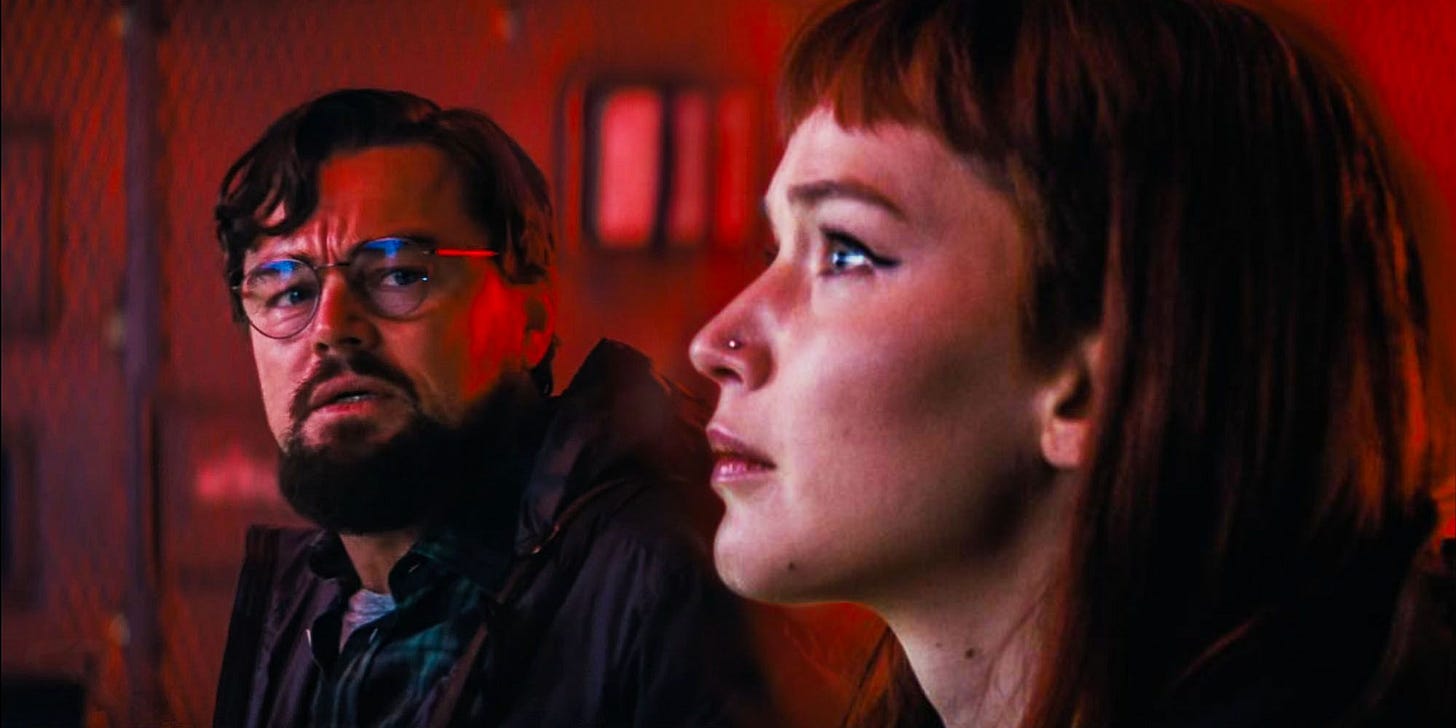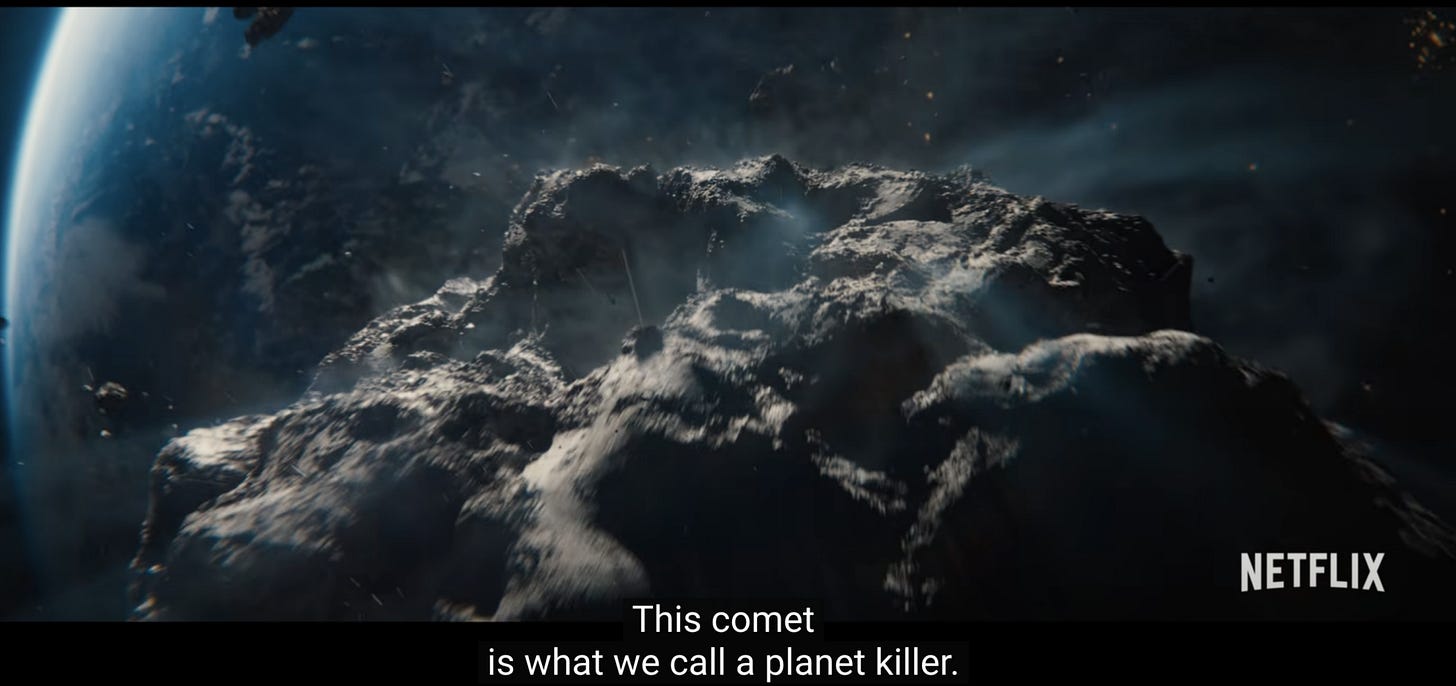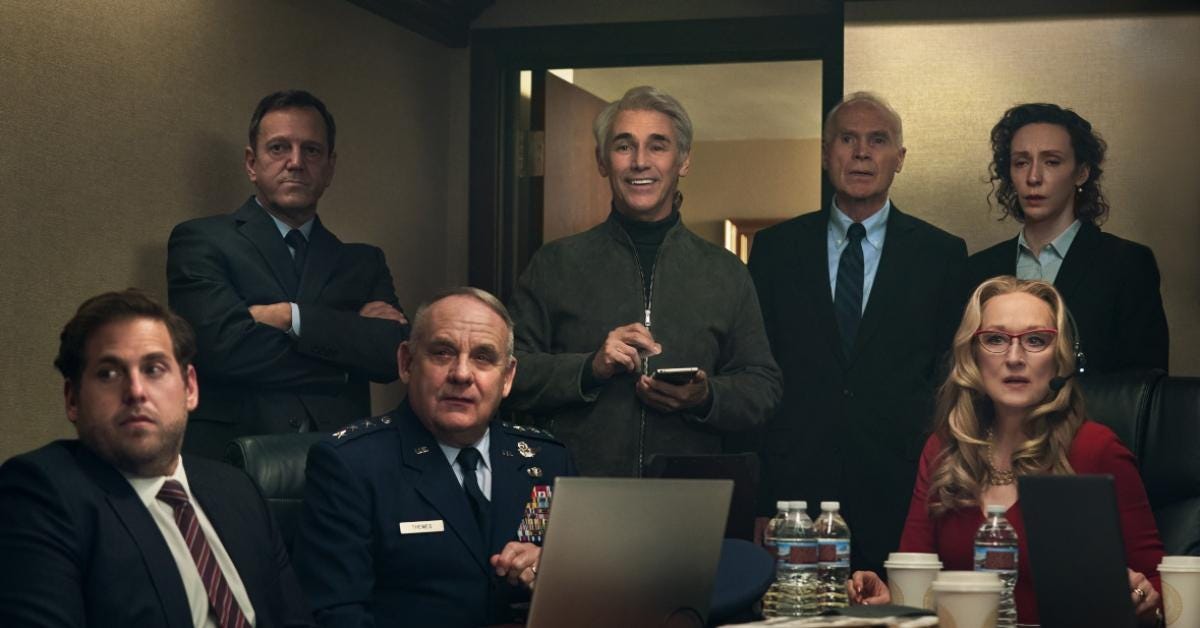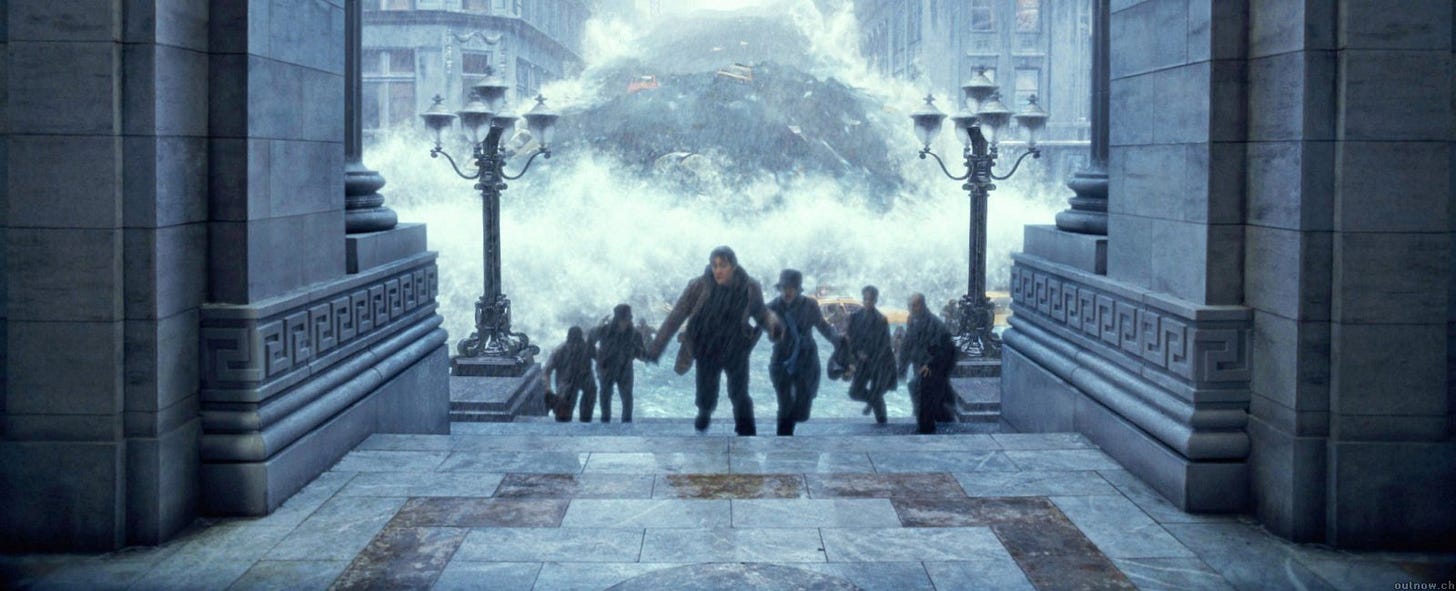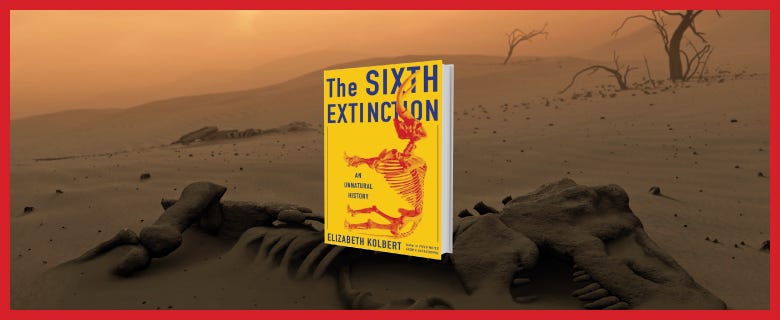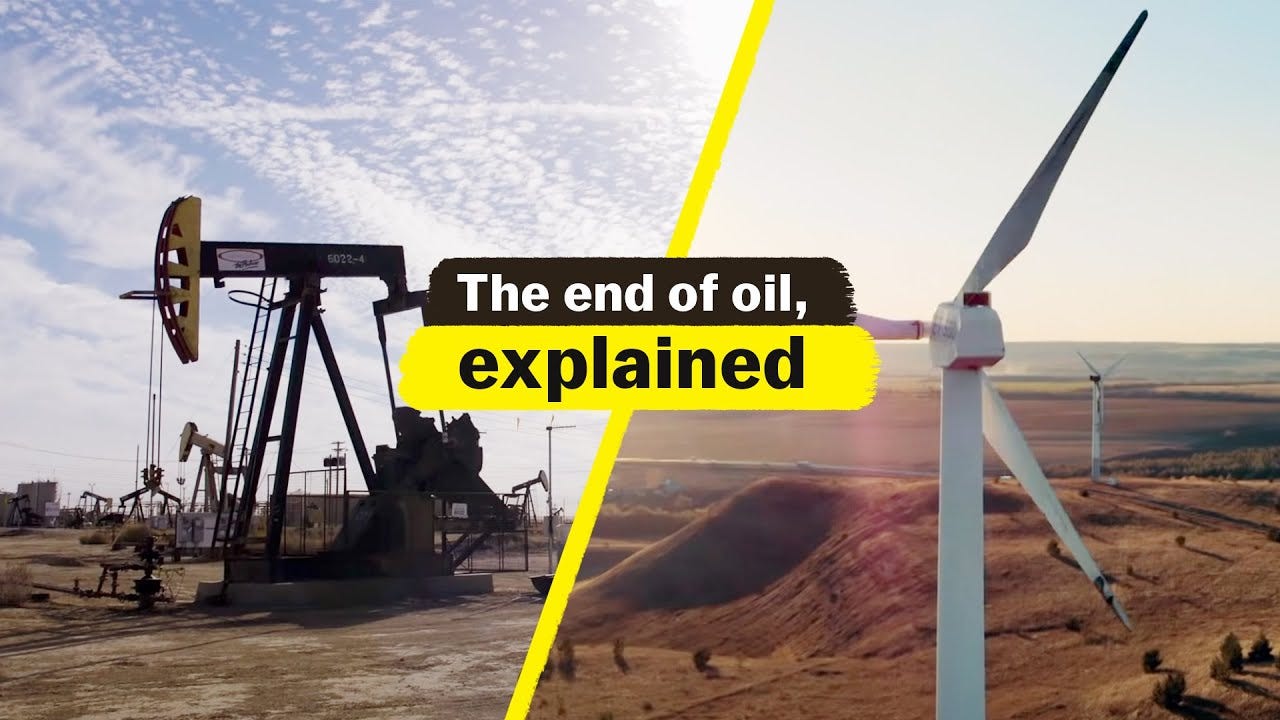Why 'Don't look Up' is not a good representation of climate change
Climate change is not a comet coming our way
A few weeks have passed since Don't Look Up was released on Netflix with a bang. The film has been the subject of many heated discussions and reviews, and now we can finally discuss it calmly.
The comedy movie was an immediate hit. In terms of viewings, it was Netflix's most popular movie. It's not hard to understand why, since it stars so many big names. With such diverse frontliners as Maryl Streep and Ariana Grande, the writers and producers tried to appeal to a variety of audiences. Even so, they did not expect such a huge success.
In the Vox Conversations podcast, the environmental journalist turned Oscar-nominated co-writer David Sirota explains how the movie's success took him aback. He also explains how Don't Look Up was written and how a climate journalist was now involved in a Hollywood blockbuster.
Although he was contacted by director Adam McKay (The Big Short) to help write a movie about climate change, he agrees the movie is much more than that. Rather than portraying climate change itself, the movie depicts current media debates and narrative disputes.
The movie and the comet analogy worked quite well for criticizing our extremely divided and media-driven world. As for a valid analogy for climate change, not so much. What makes a comet a poor analogy for climate change?
Why is a comet not an effective analogy for climate change?
1. Climate change will not happen in one big event
Climate change has been happening for years. Although extreme events are becoming more and more common, there won't be a definite moment when everyone on the planet can 'see the comet' coming. There won't be a precise moment when it's completely undeniable to everyone that we are facing a man-made climate disaster.
That's why it's so tricky to communicate about climate change. The changes are spread all over the globe and affect different populations in different ways. Some places are getting dryer, others wetter. Even in the same place, you can have the warmest day and the biggest snowstorm on record in the same year. Climate is a complicated issue, while a comet is quite simple. Although that makes it easier to talk about in the movie, in the end, it simplifies too much to be a good enough analogy.
Also, the world (humanity) will not suddenly end as it would with a comet. Climate change will slowly kill people in a radically unequal fashion. With the poor being disproportionately affected.
2. Climate change is man-made; a comet is not
A comet is a natural disaster that happens by chance. Climate change is man-made. It's caused by humans and impacts the whole planet.
I understand that by taking out the human aspect of the problem, the movie shows that global climate change is not to be blamed on everyday people. Instead, it is to be blamed on the powerful. But at the same time, by making it something that happens completely out of chance, like a comet, it doesn't give enough weight to humans' decisions and their effects. We are all part of the world and the climate.
3. A comet requires one 'simple’ solution
Although, of course, stopping a comet from hitting our planet is far from simple, it requires just one solution. On the other hand, climate change solutions must come from multiple industries in every country. It depends on many policy decisions and improved technologies. It depends on what we do daily.
It will take multiple actors and multiple changes in different industries to make it work. This is the main difficulty we face in curbing CO2 emissions. It's not simple at all.
4. The solution only comes from the US
It's commonplace to see end-of-world movies where it seems that only the US can save the planet. So, this part didn't take me by surprise. Meanwhile, even though the US is probably the biggest culprit for our planet's warming and its actions may have an enormous impact on the climate, it isn't enough. All countries need to do their part to curb emissions, and maybe the most valuable ideas and efforts come from unexpected places such as Costa Rica.
Moreover, the movie portrays solutions from other countries with disdain. This is actually accurate as an echo of the US' disdain for working together and finding solutions to the climate disaster.
If we are set on a comet analogy, could we at least blame it on greed a little bit more?
In this YouTube video, Tom van der Linden gives a helpful suggestion for improving the movie. This would make it more relatable as a critic of our current system. And a better analogy for climate change.
What if a comet came near Earth but not on a colliding route? As the movie shows, rich people and techies would want to mine it for its rare materials. The US government would help them do so, with the promise of more jobs and more money for the country as an excuse for the lay people. Together, they send spaceships to the comet. As a result of this little attempt, the asteroid has been broken up and is now en route to hitting Earth.
Both the government and the rich would then have a logical reason to create divergent messages—as it happens with climate change—to encourage people "not to Look Up". The movie would be quite similar, but this small change would add up a lot. It would make the disaster man-made and caused by greedy companies and government officials.
So, what is the movie about?
As David Sarota says in his Vox interview, it's about media and information control. Rather than anything else, this is an analogy of United States politics and societal mood right now. It serves its purpose well, but I feel like it ridicules Republicans too much. That's why this film was so controversial.
No one likes being ridiculed and shown as dumb. In this sense, even though the movie reached a large audience, I'm unsure if it had a positive effect. I don't think it will help to bring those who do not believe in climate change into the conversation.
Don't Look Up perfectly captures the hyperconnected social media life. A cute cat video appears immediately beneath a war photo on social media. And the news, especially in the US, emulates this. We are always given a gentle spin or moved from a challenging topic to a soft one without losing a beat.
This movie also deviates from other Adam McKey movies. Usually, he creates a mix of documentaries and films that explain difficult topics directly to the audience through a character or multiple characters. He uses celebrities and his movies have a YouTube feel.
It's the first time he uses an analogy to explain a topic and removes the use of a character narrator to impart information to the public. In that, he lost the opportunity to inform the public about climate change and its politics. Although the movie is a suitable analogy to show how divisive the population is on difficult topics, in the end, it's just not such a fitting metaphor for climate change.
What to watch?
The day after tomorrow (2004). Although over-the-top, it's the only movie that portrays a doomsday coming from a change in the climate. It's a fun watch, but of course, we won't face a sudden climate disaster as the movie shows either.
What to read?
The Sixth Extinction: An Unnatural History, by Elizabeth Kolbert (Henry Holt). In The Sixth Extinction, writer Elizabeth Kolbert draws on the work of scores of researchers in half a dozen disciplines, accompanying many of them into the field. She tells many extinction stories and mashes them together to tell how we caused the current mass extinction happening on the planet.
What to binge?
Explained (The end of Oil). Explained is a series of mini-documentaries by Vox. Each episode tries to address a different topic. Many of them are narrated by celebrities, as was the case with the last released episode about Oil with Ethan Hawke. You can watch them in any order, binge them, or skip to the ones that interest you.



